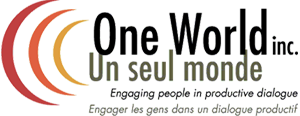Public Engagement: Harnessing the Power of Policy Input and Community Mobilization to Create Change

Is the goal of your project to solicit public input into government policy, or is it to engage a community to inspire action? Which practitioners will be most effective at instigating change for this particular scenario – the one who can engage the public in thoughtful discussions on policy or the one who can expertly mobilize a community? Research shows that public engagement practitioners tend to lean towards one of these two inclinations; understanding the characteristics and strengths of these approaches can help you to match the best practitioner to your project.
Likewise, practitioners should also be aware of their own preferences. When practitioners have a solid understanding of their strengths and preferences, they can explain their experience clearly to organizations that approach them: they can take on projects well-suited to their skillset, or find strategies to fill in the gaps in their methods. Through awareness of one’s own preferences, one can work towards achieving more holistic public engagement processes when required. As a not-for-profit or government worker looking to hire a public engagement practitioner, look for those who are open and clear about their strengths and working inclinations.
Policy Outcomes VS Community Mobilization: 2 Inclinations For Practitioners
When it comes to creating change in society, research shows that a Public Engagement Practitioner is apt to be inclined towards one of two characteristic approaches:
- The Policy Outcomes Approach: The organization and practitioner are interested in securing policy input from citizens and/or stakeholders. Commonly referred to as “Inside the Door”, this inclination prioritizes evidence-based research and works with micro groups of citizens in what is known as thick engagement (highly in-depth but with a small number of participants representative of the public) to inform policy. The reasoning behind this method is to achieve a well-informed deliberation which yields rich advice; the assumption is that this group, if truly representative both attitudinally and demographically, will come to the same conclusions as a larger group of the public would.
- The Community Mobilization Approach: Organizations and practitioners are interested in mobilizing community members around an issue, encouraging them to come together, develop and act on an issue. Commonly referred to as “Outside the Door”, the practitioner will use thin engagement (e.g. a “Town Hall” meeting) to work with a great number of citizens, but on a less in-depth level.
A practitioner’s inclination will depend very much on their training, experience and understanding of how change happens. Those more inclined to thick engagement tend to focus on legislation and policy as key levers of change. Those doing thin tend to see change happening through grassroots/community action Most recognize that aspects of both are needed but there are important specializations and spheres of expertise in each. Understanding the differences between these two approaches brings clarity and structure to a Public Engagement initiative, and matches the right people to the right projects.
What Does A Practitioner’s Approach Reveal About Them?
In a research paper presented to the World Congress of Political Science in July, Professors Rodolfo Lewanski and Stefania Ravazzi examined institutionalized public engagement processes in Italy. They found that differences in chosen methodologies depended upon whether the Public Engagement Practitioner had a stronger leaning towards policy or a stronger leaning towards community building.
Those who prioritized policy outcomes tended to:
- Gather a small, structured “micro community” of citizens, with a demographic mix representative of the general public.
- Solicit in depth feedback from this group during a forum.
- Apply the input/common ground from the micro group towards policy conclusions.
Practitioners who prioritize community building are more commonly oriented towards:
- Larger, more open-door processes.
- Open-invitation forums in larger groups.
- Solicit opinions into policy and gather insight about how participants might move forward and take action.
Achieving the Policy Input and Community Mobilization Objectives Simultaneously
The objectives of an engagement initiative largely determine the public engagement approach, the practitioners, the members of the public who are invited to attend, and those who organize and manage events. Being aware of the underlying professional preferences and expectations of actors can help to ensure that all the objectives of public engagement are met.
Wedding “inside the door” and “outside the door” approaches can help us to achieve real, lasting change. These two streams need not be in competition with one another as each does something different but complimentary in many ways. A mix of both, when possible, is perhaps the most effective solution (see the article Connecting Theory and Practice for more on this).
